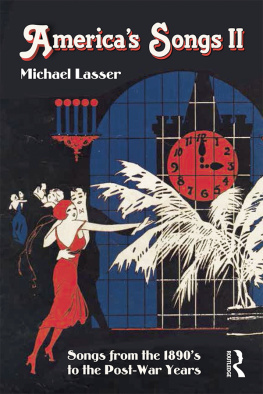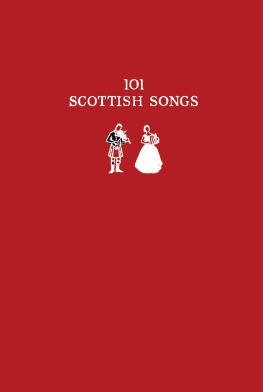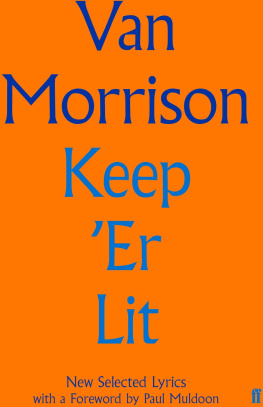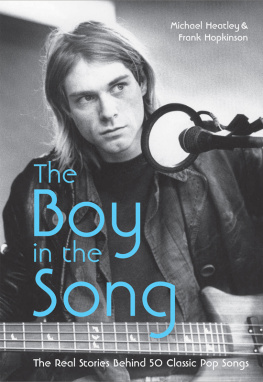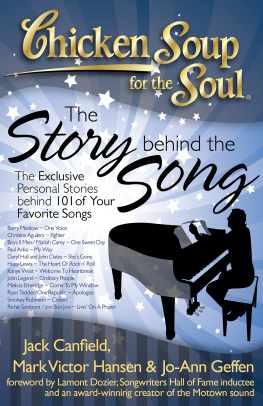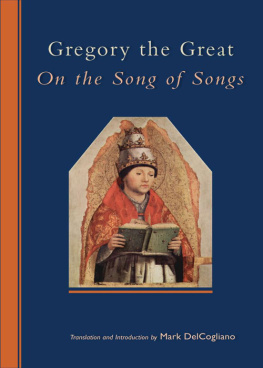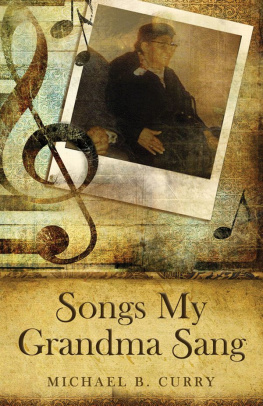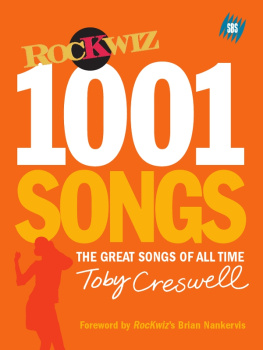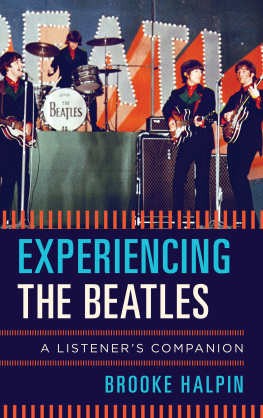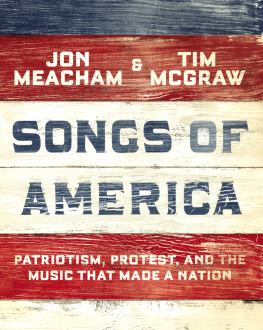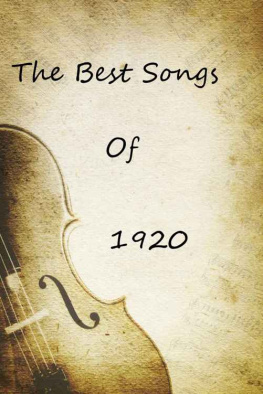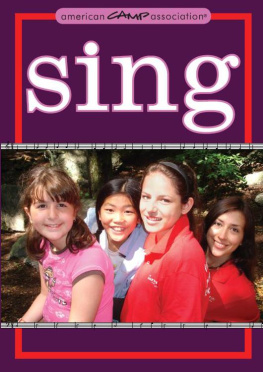There is, of course, some kind of tale behind every song, but mostly songs are written because one is a songwriter and there is a reason to write particular songs.
When Gene Lees met Harold Arlen near the end of the composers life, he asked him a question that apparently no one had asked before: Mr. Arlen, when you and George Gershwin and Rodgers and Hart and the others were writing for the theater in the thirties, were you consciously aware that what you were writing was art music? Lees remembered that Arlen looked at me for what seems in memory a long moment and then said, softly, Yes.
Lees and Arlen were talking about the Great American Songbook, the unequalled popular songs written between 1920 and 1950, but anticipated by the arrival of ragtime, jazz, and especially Tin Pan Alley in the preceding two decades. Writing almost exclusively about lovesome mix of romance, sex, and marriagethe songwriters of the Great American Songbook combined rich melodies, sophisticated harmonies, and smart rhythms with lyrics derived from the slangy vitality of American speech. The results were striking, especially in the ways they wove sentiment and wit together within the limits of a single song. Although this sounds complicated, most song-writers were devoted to simplicity. Despite their clever wordplay, accessibility was a virtue and Irving Berlin was its greatest master. Novelist Anita Loos once had a chance to watch him work: He would go over and over a lyric until it seemed perfect to my ears. Then hed scrap the whole thing and begin over again. When I asked Irving what was wrong, he invariably
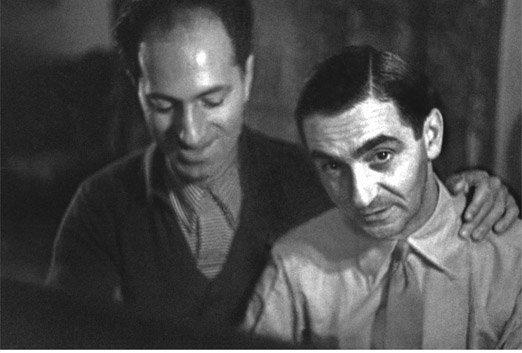
Two kids from the Lower East Side, George Gershwin and Irving Berlin. Courtesy of Photofest.
That inevitability often lay in the songwriters ability to maneuver within the unyielding conventions and conservative public taste that made innovation difficult. Despite the slavish commitment to a single subject, the repetition of the same old imagery, and the frequency of clichs both musical and verbal, the best songwriters gift for innovation is at the heart of American Popular Song: The Great Innovators , Alec Wilders book about composers, and Poets of Tin Pan Alley: A History of Americas Great Lyricists , Philip Furias about lyricists. Despite the temptation to settle for banality, each songwriter had to make a song work on hisand itsown terms. Berlin said, Ive always despised that constant effort in the theater and pictures to be unique and original. A picture or a play is good or bad. So is a song. If theyre also different, okay but its a great mistake to set out with no objective but being unusual.
Using no more words than it took to match thirty-two bars of music, a good lyric could spark what was tired and lift what was flat. Just as good songwriting combined sentiment and wit in a single song, so it had to be
As they learned that ragtime and jazz provided enough edge to keep things interesting, composers capitalized on the looseness and drive of syncopation, while lyricists created a lively up-to-date language given shape by their playfulness with sound and rhyme in songs that gave voice to everyone, especially the young. We identified as standards those songs that were so good they refused to disappear after their initial popularity. They continued to buzz along just under the surface until new singers emerged to perform them, thereby confirming that what wed been singing in the shower all along was worth remembering, even if it was as simple, sweet, and sad as this:
I long to rest my weary head on somebodys shoulder,
I hate to grow older
All by myself.
The reasons elude me, but the history of songwriting is dense with anecdotes about the songwriters and the songs: the serendipitous momentor was it dumb luck, the way somebody worked, why and how a song came to be written, and then the recognition that it workedwhat Herman Melville called the shock of recognition. Songwritingthe completed song stands at the confluence where collaboration and history meet, along with art and commerce. With the exception of Berlin, Cole Porter, and a few others who wrote both words and music, nearly all these songs were the result of collaboration. It was something like a marriage, shaped by affection and conflict, common understanding but seething tensionnot only as a result of personality but often in terms of the work as well. Even George and Ira Gershwin, who loved each other beyond measure, occasionally argued sharply. Because the music usually came first, the task of setting words to it was no mean feat, especially if the collaborators heard a melody from different emotional perspectives. As Johnny Mercer put it, Writing music takes
Attitudes toward love, sex, and marriage changed rapidly and dramatically through the twentieth century, and songwriters had to keep up. They werent poets and they certainly werent sociologists, but the moment when the lyric and the music became onea new third thingcould be thrilling. Yip Harburg said that the greatest romance in the life of a lyricist is when the right words meet the right notes. To stay in the game, songwriters needed to live in their own time with their antennae aquiver for the newest catchphrase, the sharpest rhythms of the day, the hottest gossip, and the latest changes in what people wanted and what they were doing. While some of the songs were autobiographical, more often than not the songwriters subject was not themselves, but us. We remember a song, we attune ourselves to its emotional vibe, and were able to say, Yes, thats it. Thats how it was; thats how it feels. The songwriters would never have said so, but they were democratic populists who told us our own stories in our own time, and then the best of those songs continued to speak to other times. To see how they did it, song by song, is the purpose of this book.
Chapter 1
18911895
After the Ball [ A Trip to Chinatown ] (1892)
Lyrics and music by Charles K. Harris (18671930)
The business of American popular music began in a storefront in Milwaukee. Charles K. Harris, a small-time vaudeville performer, wrote songs for any performers he could finagle into singing them. Eventually, he opened his own publishing house and hung a sign over the door: Songs Written to Order.
No song is more important to the history of Tin Pan Alley than After the Ball, a lugubrious strophic (versechorusnew verserepeat chorus, etc.) waltz of unrequited love that records its main characters lifetime of bitter disappointment. They wept; we yawn. They embraced grand emotions; we prefer irony.
In 1891, Harris attended a dance during a visit to Chicago. He watched a young couple argue and then separate. A line came to him: Many a heart is aching after the ball. When he got back to Milwaukee, he finished the ballad in which an old man explains to his niece why he never married and why his former sweetheart soon died of a broken heart. He had seen the woman he loved kiss another man but learned only years later that the man was the young womans brother. Of such unsubtle melodramatic plot lines were Sentimental Ballads often made.
The first time a performer sang After the Ball in a Milwaukee vaudeville house, he forgot the words and the song flopped. Harris then paid a well-known theater performer named J. Aldrich Libbey $500 and a percentage of the sheet music sales to sing it in full evening dress during a San Francisco performance of the hit musical, A Trip to Chinatown . At the end of the first verse and chorus, and then the second, the audience was silent. After the Ball soon became the most successful song of its time, partly because Harris promoted it shamelessly. It also didnt hurt that John Philip Sousas Orchestra played it at the Chicago Worlds Fair. In 1892 alone it sold over two million sheet music copies. Its remarkable success taught publishers and songwriters alike that a single song could make huge profits if it was properly written and promoted. Harris soon moved to New York City, as did most of the major music publishers. The American popular music business re-established itself in a single placein the shadow of Manhattans Union Square, the home of beer halls, dance halls, concert halls, and vaudeville houses, soon to be renamed Tin Pan Alley.

